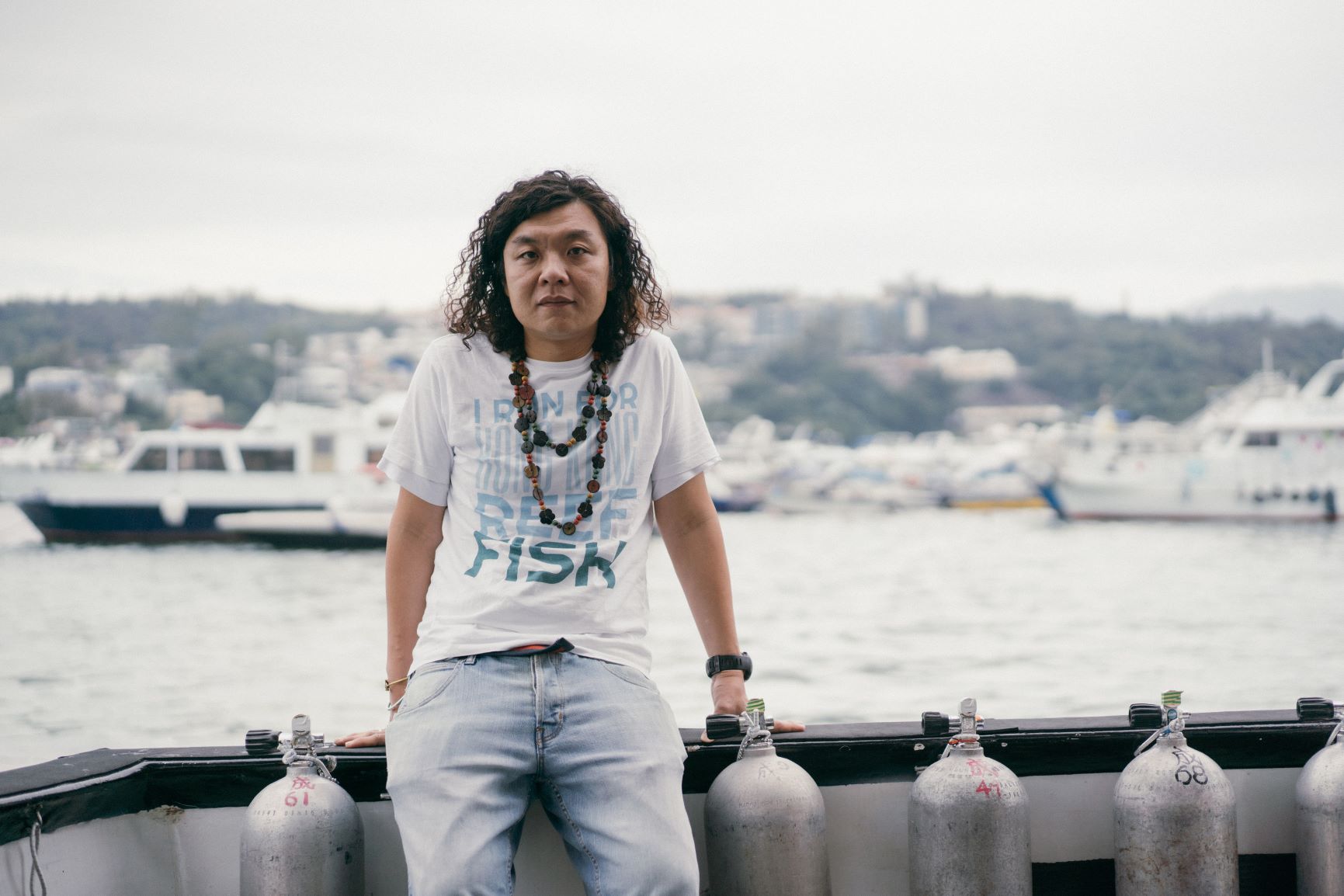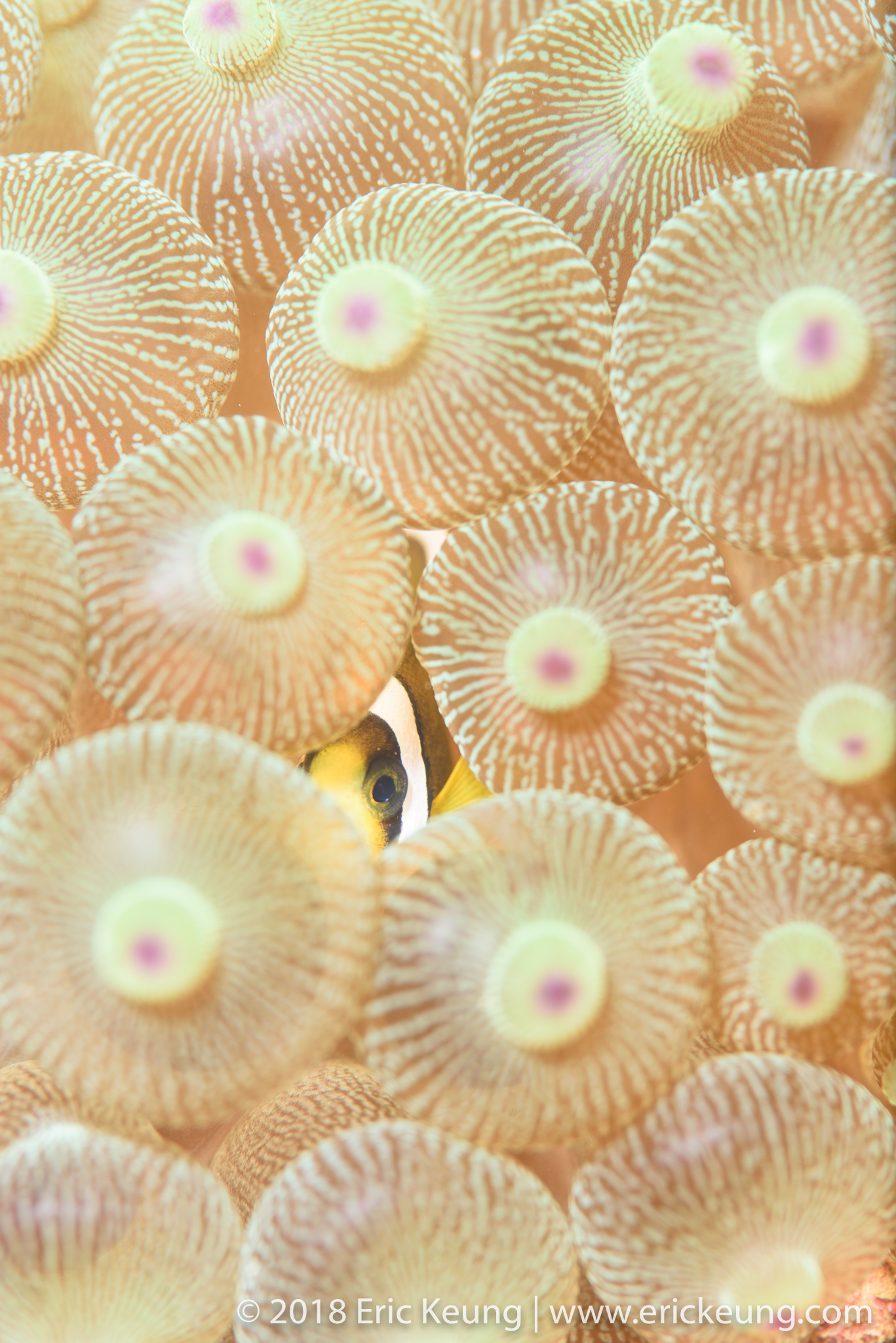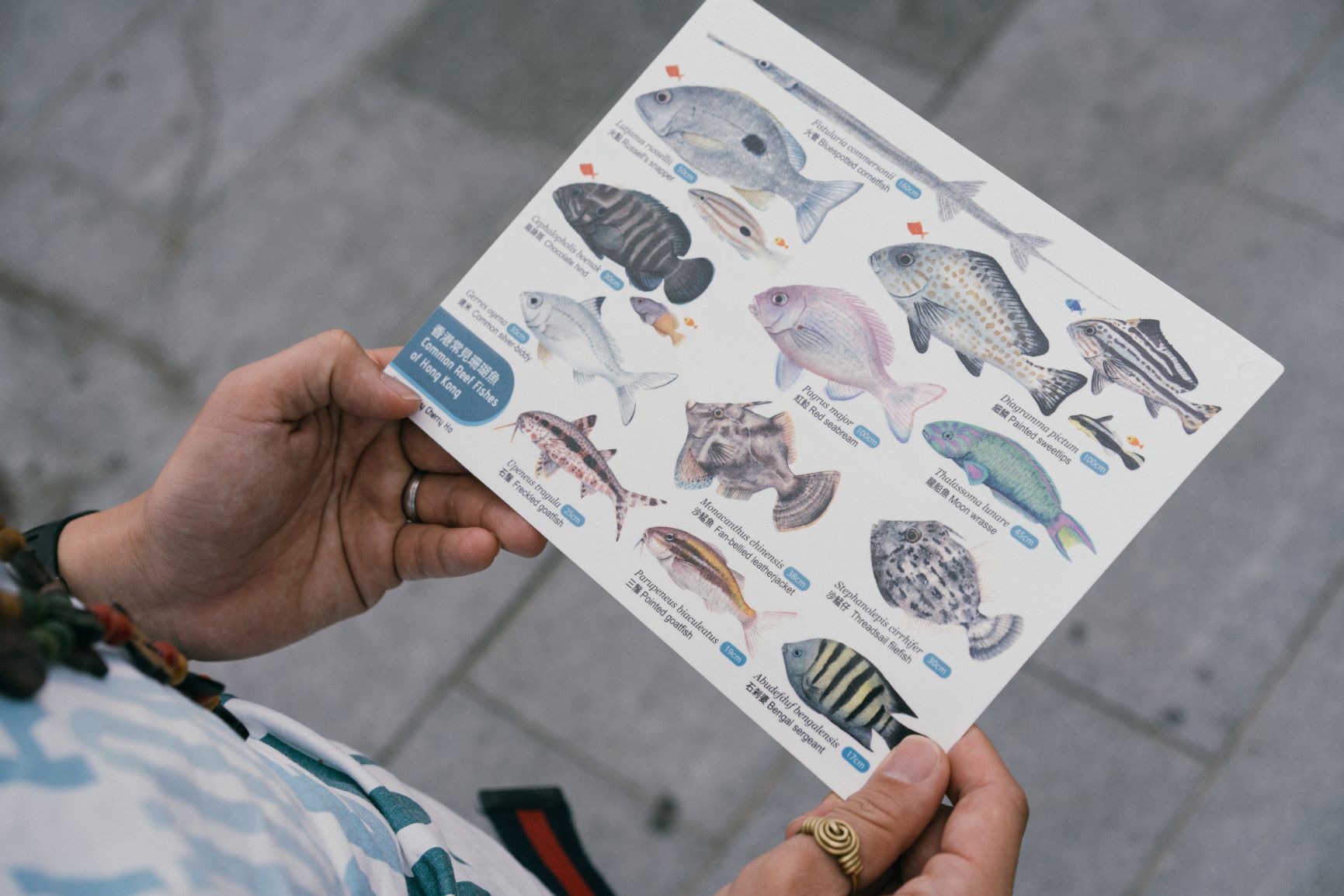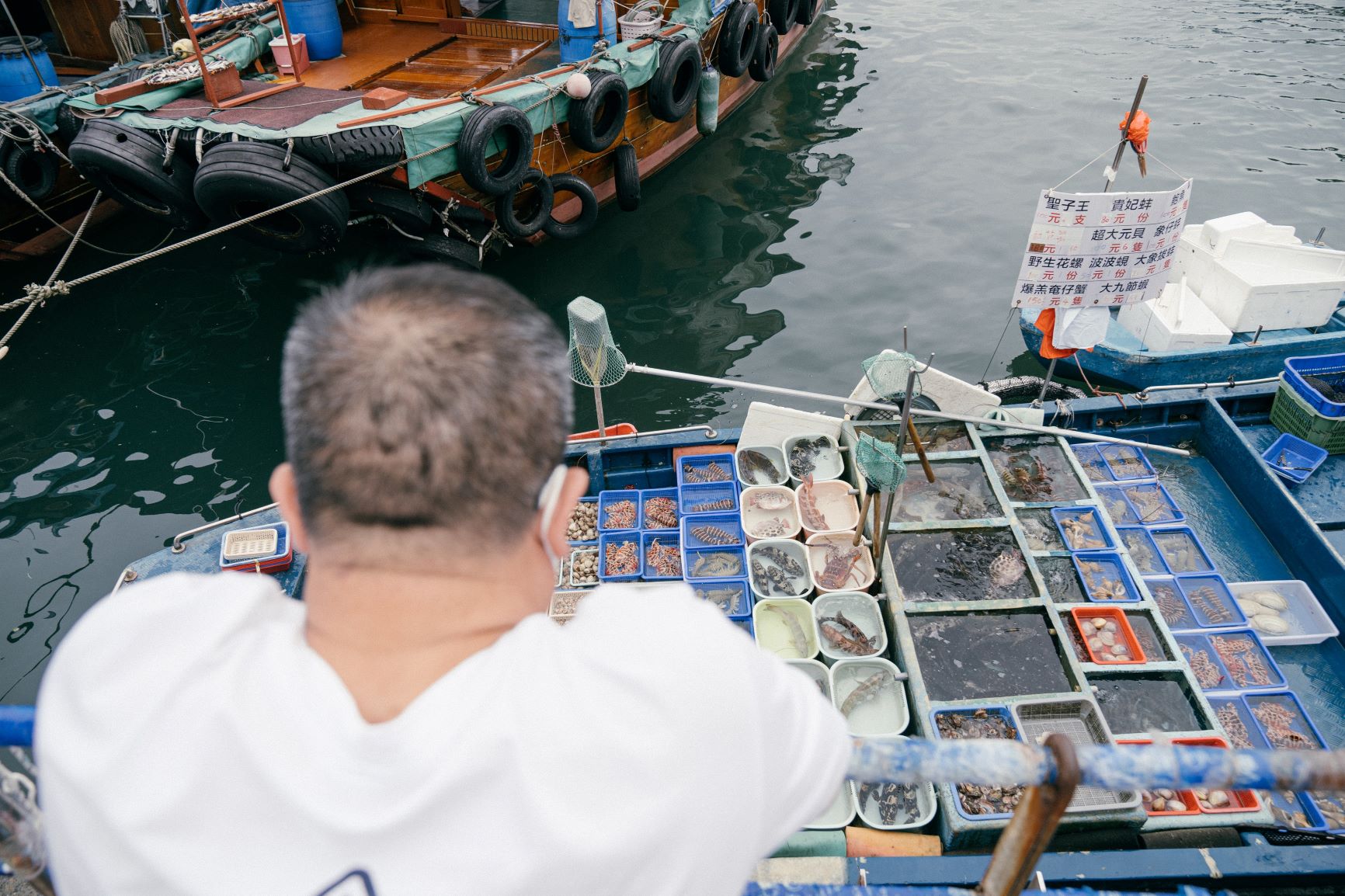Stan Shea believes knowledge is power – power to save our oceans. Since 2014, Stan has been leading a very cool underwater project to build a baseline knowledge of Hong Kong’s reef fish. He’s been helped by an enthusiastic team of citizen scientists overseen by marine researchers. Before we can properly protect our oceans, we need to understand the life that lives there, Stan says. And when we are protecting our oceans, we’re protecting the climate too.

An earlier Greenpeace study that found evidence of mass coral bleaching in Taiwan illustrated how closely linked marine wildlife is with the health of our climate. Luckily, Hong Kong’s coral escaped serious bleaching this year, however when a local citizen science group analysed data on their long-running reef fish survey, they did find possible signs of climate impacts. We invited Stan Shea, who leads that underwater survey, to take us on a dive deep into Hong Kong’s waters to better understand what’s the connection between local marine biodiversity, conservation and the climate crisis.
There’s something fishy about this science survey
Stan Shea is the marine programme director with the Hong Kong branch of BLOOM Association, a global marine conservation organization. In 2014, he launched 114˚E, a project involving a team of citizen scientist divers who complete reef fish surveys every year and are overseen by marine researchers. Their work has built up a baseline knowledge of local marine ecology, something that, until Stan came along, was sorely lacking in Hong Kong.
Stan explains that the only books on Hong Kong fish available locally are two by the academics then the rest are all about fishing! Nobody was making any study on the number and types of local fish here until 2000 when basic data started to be collected. Hong Kong marine specialists tend to focus on a particular species, for example Chinese University of Hong Kong has done a lot of excellent and in-depth research on coral but projects are not generally conducted in the long-term nor continuously, which is important if you want to amass a comprehensive body of data.
His dream is to establish long-term and regular marine surveys to build up a solid database that will be constantly updated and monitored to support local marine conservation work. “If we don’t even know what species are living in our waters, how can we talk about protecting them? How can we talk about ecological conservation?”

Fishing for local talent
While Stan was studying for his master’s in ecology and biodiversity at the University of Hong Kong, he realised that the world of local marine research really lacked people. His three professors were all from overseas and they were very passionate about Hong Kong’s species. It made him wonder: why were they so excited about Hong Kong’s marine life when Hongkongers themselves had so little knowledge about the fish in their own seas? He decided that he was going to throw himself into fixing this problem.

Citizen science is key
Stan’s been working in marine conservation for 10 years now. The project he leads, 114˚E, is made up of citizen scientists, that is local volunteer divers. They hail from all different backgrounds – there are teachers, medical practitioners, fishermen and underwater photographers. They dive every May and June to October in Hong Kong’s eastern waters. The name 114˚E is the longitudinal coordinates delineating the eastern stretch of seas where the bulk of the surveys take place. Each diver fills in a form, recording the number and species of fish seen, along with photographic data to help researchers verify their data.
“In citizen science, we need to remember that those taking part are not scientists, so you need to offer them appropriate training and provide them with basic knowledge. It’s also important to verify their data; there’s always a chance they could fill in something incorrectly, or make a mistake when identifying a species. So you must do quality control. I’d rather be short one item of data than have that data item be wrong. What’s also great about citizen science is that these are people from all different walks of life and they share their experience and their underwater photographs with their friends in their worlds, and that’s how we can have an even wider influence.” As understanding spreads, the foundations of conservation become deeper and stronger.
Has the climate crisis reached Hong Kong waters?
Marine species are adapted to living in particular waters; put very simply, we can separate fish into those that live in tropical waters, temperate waters and polar waters. However, scientists have discovered that as seawater grows warmer, the division between these zones is breaking up.
It was reading about fish migrating to polar regions that inspired Stan to launch this marine survey, which is now more than five years old. After analysing his data from the past few years, he was surprised to see that although Hong Kong is a sub-tropical zone the number of tropical fish here is climbing. This could be the early warning signs of the climate crisis, but he emphasised that more data needed to be collected before he could make a definitive conclusion.
Stan, practical yet full of enthusiasm, said even though they have limited resources as an NGO their project was making an important contribution by continuing to collect data and monitoring the situation. They are helping with climate change research by offering their data to the University of Hong Kong, to supplement their research on the temperature and salinity of Hong Kong waters. Over time, their data combined with research from Hong Kong’s top universities will be the backbone of local climate crisis studies.

I bet you didn’t know that the diversity of fish in Hong Kong is greater than that found in the Caribbean? Head over to the 114˚E website to see some of the weird and wonderful marine life in our very own watery backyard! There’s also lots of information of how the volunteer divers identify the different fish species based on their colours, patterns, body shapes and behaviours.
We hope this article has inspired you to learn more about Hong Kong’s waters. After all, understanding and caring about our beautiful seas is key to facing up to the climate crisis! Hop on board and join our campaign to save our oceans and our climate.
About “Let’s Talk about Climate Change” series
Climate change is not only here, but it has also evolved to “Climate Emergency”. As global citizens, we should not ignore the crisis we are in. Yet sometimes if not all, we might feel the issue is too big for us or too far away. We are inviting people in our local community, from all walks of life, to share with us how they connect to and make the effort to deal with climate change. Read More


